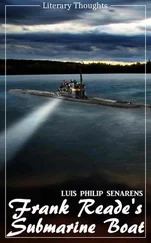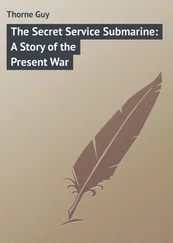More legs—strange legs—began to come down the ladder. This pair was the skinniest pair of shanks I had ever seen. Then bare knees; then a pair of shorts, and then the entire figure came into view, crowned with a white pith helmet. This, I learned later, was Major Wilkinson, aide to General Wavell.
All sorts of scuttlebutt ran through the boat now. It seemed we were taking the U.S. Submarine High Command out from Corregidor. The Swordfish would take out other members of the staff. Among those who left Corregidor at that time, we learned later, were Admiral Hart, Rear Admiral William Glassford, and other ranking U.S. officers.
With our visitors came two radiomen, Don Irish and Duke Woodard. Don, a tall, red-headed fellow about thirty, was gaunt and emaciated after his ordeal on the Rock. It took him days to fill out and regain his vitality. Woodard was thin, too, and suffered intensely from an ulcerated leg wound. Loaiza took him over, and I didn’t see much of him until later. Don told me how they fought to keep their radio going on Corregidor, and gave me another picture of the doggedness and determination of the men who held out so long and so bravely against the Japs.
When they were ready to transmit, he said, four volunteers dashed out with a reel of wire, strung it over scrub brush, and rushed back to send their messages. Seconds later, Jap bombers roared over and blew the antenna to shreds. Undaunted, the Americans watched their chance, raced out again from their tunnel, and strung up a new antenna. And again the Japs rained fire and death from the air to destroy it. Yet, in the midst of that furious and ceaseless barrage, the boys strung up their antenna, sent their messages out, and kept the world informed of what they were doing. Food was a real problem, Don said. They ate only two meals a day, and most of each meal was rice. Their water supply was low. Their ammunition supply was low. Don couldn’t give enough credit to the anti-aircraft batteries, who ran up records for shooting Jap planes out of the sky. The Americans had a delaying job to do, and they did it.
Captain Fife, having gone to the charts, virtually lived with them. He rarely came through the boat. The wardroom was crowded twenty-four hours a day. The messboys had to set up three eating shifts to accommodate everyone: three breakfasts, three lunches, three dinners—the cooks worked marvels preparing meals for more than eighty men on their tiny stove. They and the Filipino boys were real soldiers on the trip out. They never grumbled, yet they were continuously preparing food, serving food, removing food, setting dishes, washing dishes—and, in between, filling and refilling the ten-gallon coffee urn. An average submarine crew can drink thirty gallons of coffee every twenty-four hours—and more when it’s under tension.
Bit by bit the word had been going through the boat that we were heading for Australia, taking the High Command there. That was a short trip—we’d be there in a few days.
Australia meant cable facilities and our first chance to let our folks back home know we were safe. The first moment I had I sat down at my desk and began composing one cable after another to Marjorie, trying to find words to explain all I wanted to say: how I felt when I couldn’t reach her, how I knew she must have worried, how much I missed her and Spike, how I had their photographs right here in front of me when I worked and above my bunk when I slept, so that I saw them the last minute before I fell asleep and the first moment I awoke every morning. At last I settled on: “Feeling fine don’t worry love to all.” I had it neatly typed, with address and signature, and folded in my pocket days before we reached Australia.
Some of the crew asked Paul and me to help them with their cables. They crowded into the shack—it held only two persons besides us—and stood outside it and joked about what they’d send. We all felt a little embarrassed at showing our feelings. Zerk, sarcastic as always, would wander in and listen, and wander out again, but we took his ribbing without getting angry. He never received mail. He didn’t know whether his wife and children were alive. When we used to reach port, before Pearl Harbor, and the mail pouch was thrown from the barge and the letters distributed, he’d find himself a stool somewhere and read a detective story.
On the way in both officers and crew of the Wolf were pretty satisfied with themselves. We’d have preferred action to evacuating personnel, but we realized that this was a mission comparable in importance to sinking enemy ships. After all, ships can be replaced, but submarine officers with the training of our passengers could not. And we were proving again that a surface blockade couldn’t stop the Wolf . We were proving that the submarine has an advantage over all other craft because she could disappear from sight. No matter how well-spaced enemy units were, no matter how expertly set up to intercept submarines, the submarines could still be sailed through at fairly high speeds, covering great distances without undue strain on any member of the crew, its officers, or its passengers.
We were less than twenty-four hours out of Australia when the bridge lookout, about 1,500 hours, shouted: “Seaplane above the port bow!”
The alarm sounded. We rushed to battle stations. We flashed our recognition signals to the plane. The pilot flashed his—and for the next few minutes we had a bad time of it. Our signals didn’t jibe.
If a pilot doesn’t receive the correct signal, he drops his bombs first and investigates later. We could try to shoot him down. It would be a smaller loss to knock out one plane than to let a plane sink a submarine. But if we ordered the crew to their guns, the pilot might take that as a hostile act, and bomb us. All submarines look alike. If we did nothing, he might bomb us anyway.
It was a ticklish situation. Captain Warder thought it through—and did nothing. The pilot might be a Jap, but more likely he was an Aussie. The port hadn’t been bombed yet from the air. The pilot must see that we were white men. Our very lack of activity topside would show we weren’t enemies.
There was a tense minute or so, and then the plane made a wide sweep, dipped one wing in salute, and soared off into the distance. It had been a bad scare.
As we neared the port, we saw a familiar shape anchored in the bay— “Ma” Holland , our tender. We moored alongside. It was late afternoon early in 1942.
As we lay there, the U.S.S. Tarpon limped in. She looked as if she had weathered a terrific storm. And she had. We learned that she surfaced in a typhoon and nearly foundered. The Tarpon had no choice in the matter. Her batteries were down, and she had to surface. A giant wave came over after the hatch was opened, poured down the conning tower hatch, short-circuited radio and generators, and nearly flooded them out. The Tarpon couldn’t dive after that; she was helpless to do anything but ride it out for three full days. For the first time in their lives nearly every man on the Tarpon was seasick.
The Tarpon was sent home later. She gave a good account of herself, though. She sank a pair of them on the way in.
But the Tarpon was soon forgotten. We wanted to get our cables off to our families, and when we finally did that, even though we couldn’t say where we were, we were satisfied. Marjorie told me later that there was a knock on the door, a Western Union messenger delivered the telegram, and that it bore only my message and my signature. For all she knew, I might have sent it from Iceland or Timbuktu.
CHAPTER IV
Revenge for the Rock
WE FOUND the port a ghost town. When we got there most of the civilians had fled to the interior. The Japs were threatening the whole of Australia. They had bombed Rabaul in New Britain, they’d gained a foothold in New Guinea, and in the Solomons they’d bombed Tulagi and Kieta. The port was on the alert. The streets were deserted. Homes and stores were boarded up. It looked like a town in the tropics waiting for the hurricane to strike. The heat was terrific—the mercury simmered at no degrees.
Читать дальше






![Hubert Bancroft - The Native Races [of the Pacific states], Volume 5, Primitive History](/books/749157/hubert-bancroft-the-native-races-of-the-pacific-s-thumb.webp)

![Hubert Bancroft - The Native Races [of the Pacific states], Volume 1, Wild Tribes](/books/750126/hubert-bancroft-the-native-races-of-the-pacific-s-thumb.webp)



![Edward Ellis - Adrift on the Pacific - A Boys [sic] Story of the Sea and its Perils](/books/753342/edward-ellis-adrift-on-the-pacific-a-boys-sic-s-thumb.webp)